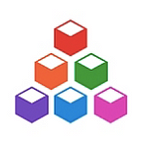Self-Determined … ALL Students Can Be!
By Dana Rusher, Sheida Raley, & the NTACT Knowledge Development Team
Self-determination paves the way for a successful transition to adulthood for individuals with disabilities and their families! In fact, self-determination is an in-school predictor of positive post-school outcomes for students with disabilities (Test et al., 2009). Rowe et al. (2015) defined self-determination as “the ability to make choices, solve problems, set goals, evaluate options, take initiative to reach one’s goals, and accept consequences of one’s actions” (p. 121).
ALL students (i.e., those with disabilities and those without) can become self-determined, working toward personally valuable goals, “with individualized instruction that considers personal characteristics, culture, and preferences of students and their families (Shogren, 2011). Self-determination looks different for everyone (Shogren, 2013) and is identified by three essential characteristics:
· Volitional action: Students who are self-determined purposefully act as a causal agent in their lives (Wehmeyer, 2005).
· Causal agency: Students who are self-determined make the things they want happen in their lives (Wehmeyer, 2005).
· Quality of life: Students who are self-determined improve their quality of life (i.e., emotional, physical, and material well-being, interpersonal relationships, personal development, self-determination, social inclusion, and rights; Schalock et al., 2002) by acting with intent and as the causal agent in their lives (Shogren, 2013).
One model of instruction designed to promote self-determination, by enabling teachers to teach students to self-direct their own learning, is the Self-Determined Learning Model of Instruction (SDLMI; Wehmeyer, Palmer, Agran, Mithuag, & Martin, 2000). NTACT has identified the SDLMI as an evidence-based practice to teach students with disabilities goal-setting and attainment and problem-solving skills (2016; 2018).
Teachers use the SDLMI to guide students in answering a set of questions that guides them to:
· Set a Goal,
· Take Action (to achieve their goal), and
· Adjust Goal or Plan (by self-monitoring and self-evaluating progress toward their goal)
States implementing the SDLMI: A focused view:
The Maryland Coalition for Inclusive Education (MCIE) and the Delaware Department of Education (DDOE) in partnership with Kansas University Center on Developmental Disabilities (KUCDD) researchers (led by Dr. Karrie Shogren) are engaged in a large-scale, longitudinal study to identify the most effective implementation supports (e.g., online or the additive benefit of in-person coaching supports) for teachers using the SDLMI to enhance student self-determination, academic achievement, and access to the general education curriculum. In addition, the project looks at the how different implementation supports impact general and special education teacher knowledge, skills, and use of the SDLMI. Six high schools across Maryland and Delaware are currently implementing the SDLMI in inclusive, general education core content classes (e.g., English Language Arts, Science) with approximately 1,000 9th grade students. Over the next two years. KUCDD researchers, MCIE, and DDOE will collaborate to host annual high-quality, interactive in-service training with teachers and other school staff, partnering throughout the academic year to support schools, teachers, and students in project activities.
NTACT’s Resources to Support Promoting Self-Determination
The National Technical Assistance Center on Transition’s (NTACT) work focuses on supporting states and local education, vocational rehabilitation, and career technical education agencies in building collaborative interagency teams to scale-up secondary transition evidence-based practices and predictors of post-school success (EBPPs). The following resources are designed to assist in promoting self-determination.
· Using the Self-Determined Learning Model of Instruction to Teach Goal Attainment
Describes the evidence supporting using the SDLMI to teach goal attainment for students with disabilities.
· Using SDLMI to Teach Goal-Setting and Problem-Solving — Provides a research-to-practice lesson plan starter to assist practitioners in implementing the SDLMI to teach goal-setting and problem-solving.
· Predictor Implementation Self-Assessment — This assessment is intended to provide
schools, districts, or other stakeholders with a framework for determining the degree to which a transition program is implementing practices likely to lead to more positive post-school outcomes for students with disabilities.
· Taxonomy for Transition Programming 2.0 — Provides information about research-based practices to support implementation of a transition-focused education.
Additional Resources:
· The Self-Determined Learning Model of Instruction: Teacher’s Guide — This practice resource describes The Self-Determined Learning Model of Instruction and how teachers and other personnel can use the model to support students in becoming more self-determined.
· Self-determination.org — This website includes information about self-determination as well as the Self-Determination Inventory — a measurement tool.
References
Rowe, D. A., Alverson, C. Y., Unruh, D., Fowler, C., Kellems, R., & Test, D. W. (2015). A delphi study to operationalize evidence-based predictors in secondary transition. Career Development and Transition for Exceptional Individuals, 38, 113–126. doi: 10.1177/2165143414526429.
Schalock, R. L., Brown, I., Brown, R., Cummins, R. A., Felce, D., Matikka, L., … & Parmenter, T. (2002). Conceptualization, measurement, and application of quality of life for persons with intellectual disabilities: Report of an international panel of experts. Mental retardation, 40, 457–470.
Shogren, K.A. (2011). Culture and self-determination: A synthesis of the literature and directions for future research and praxtice. Career Development for Exceptional Individuals. 34, 115–127. doi:10.1177/0885728811398271
Shogren, K. A. (2013). Self-Determination and Transition. Baltimore: MD: Brookes Publishing.
Shogren, K. A., Wehmeyer, M. L., Burke, K. M., & Palmer, S. B. (2017). The Self-Determination Learning Model of Instruction: Teacher’s Guide. Lawrence, KS: Kansas University Center on Developmental Disabilities.
Test, D. W., Mazzotti, V. L., Mustian, A. L., Fowler, C. H., Kortering, L. J., & Kohler, P. H. (2009). Evidence-based secondary transition predictors for improving post-school outcomes for students with disabilities. Career Development for Exceptional Individuals, 32, 160–181.
Wehmeyer, M. L. (2005). Self-determination and individuals with severe disabilities: Re- examining meanings and misinterpretations. Research and Practice for Persons with Severe Disabilities, 30, 113–120.
Wehmeyer, M. L., Palmer, S., Agran, M., Mithaug, D., & Martin, J. (2000). Promoting causal agency: The Self- Determined Learning Model of Instruction. Exceptional Children, 66, 439–453.
